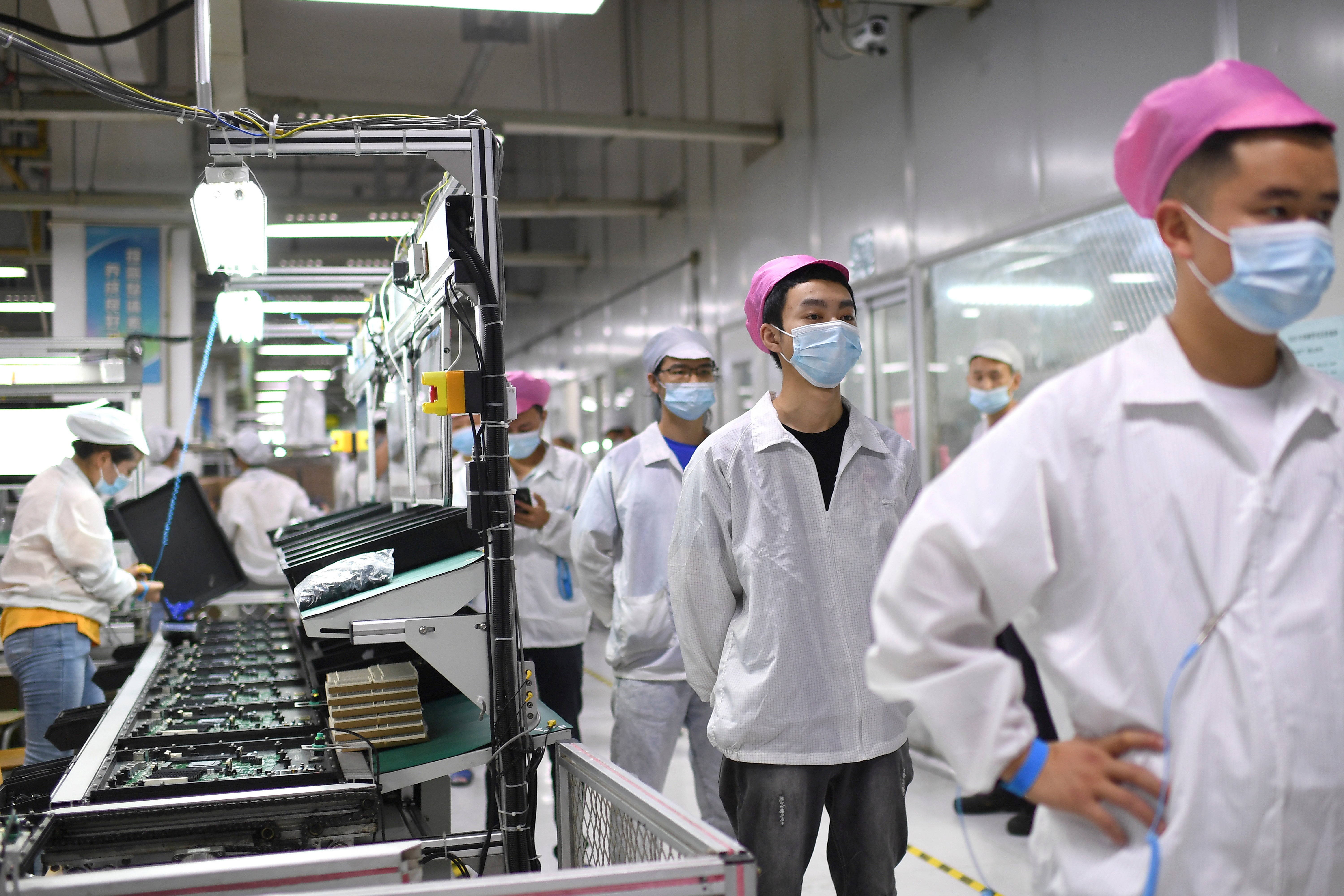A bad weekend for Apple – and a worse one for China
What we are seeing right now is one more chunk of evidence that the Chinese economy will face increasing headwinds through the next decade, writes Hamish McRae


It has been a troubling weekend in China, where violent protests against Covid lockdowns have struck Shanghai and other major cities. It has also been a troubling period for Apple. The world’s biggest iPhone factory in Zhengzhou, run by Foxconn, has seen huge unrest about working conditions.
It isn’t easy, writing from London, to make a judgement as to how the Chinese authorities will cope with the pressure to ease up on lockdowns, or how Foxconn will try to improve the working environment in its factories. But it is glaringly obvious that global supply chains for electronic components and products will continue to be seriously disrupted for the foreseeable future.
As a consequence of the Covid outbreaks, Foxconn has had to suspend chip production at its factories in Shenzhen and Shanghai. This is a specific issue for Apple, which has been short of supply over this Black Friday weekend, the biggest shopping period of the year. It is estimated that disruption in China is costing the company roughly $1bn a week in lost iPhone sales.
Let’s wait and see the numbers before guessing how this weekend’s business will turn out more generally, but news of the Apple difficulties knocked 2 per cent off the share price on Friday.
But this is not just about Apple or indeed about chip manufacturing more generally. What we are seeing right now is one more chunk of evidence that the Chinese economy will face increasing headwinds through the next decade. Of course, it will remain the world’s great manufacturing centre – not only for electronics but also for other goods, including cars. Car and light truck production this year looks like being around 24 million, a little down from its peak of over 25 million in 2018, but that compares with about 11 million in the US and 8 million in Japan.
The threat for China is not that it will suddenly lose its pole position. Rather it is that it will gradually be squeezed out of the top end of the manufacturing processes, and as a result become stuck as a middle-income economy, rather than a fully-developed one. There was an important study by the Lowy Institute earlier this year, which suggested that this was likely to happen. Yes, China might surpass the US economy in absolute size, but it would be stuck with much lower income levels.
There are two parallel forces driving what is really a US offensive to try to put the brakes on China’s rise. One comes from the government, with the plan announced last month by President Biden to hobble China’s chip industry with tough new export rules. The other – and this is why these past few days have been so important – comes from US business.
Relying on China as a production centre has been demonstrated with brutal clarity to be commercially risky. As a result, US enterprises that have gone full tilt into China are pulling back.
The most celebrated case of shifting away from China has been the move by Apple to make the latest iPhone 14 in a factory in India, near Chennai. But this is not a case of Apple dumping Foxconn – quite the reverse, because Foxconn is running the factory. JP Morgan reckon that by the end of this year, Apple will be making 5 per cent of its global production of the iPhone 14 in India and 25 per cent of all iPhones there by 2025.
To keep up to speed with all the latest opinions and comment, sign up to our free weekly Voices Dispatches newsletter by clicking here
How will China respond? Here the story becomes even more interesting, because there were signs at the latest party congress that China was seeking to attract back the talented expats who have moved to the US and work in high-tech companies there.
Human capital is the scarcest input in developing high-tech competencies, and many of the brightest Chinese students have moved to the US for education and then sought jobs there. Getting them to come back is a big deal, but one that China has to try to pull off. But the pictures of protests in Shanghai and other cities will not be a lure for them to do so.
China will inevitably have some successes in building its top-end semiconductor industry, and no one should underrate its ability to do this. But if the US and other multinationals gradually shift production of iPhones and other upmarket products away from China, the market for those top-end chips will have to come from domestic producers, not international ones.
So the pictures that we are all seeing of these protests are damaging in two ways. They encourage foreign companies to diversify away from China. And they make it harder for the country to attract back the talent it needs to develop its top-end domestic producers. Not a good weekend for Apple, but a worse one for China.






Join our commenting forum
Join thought-provoking conversations, follow other Independent readers and see their replies
Comments